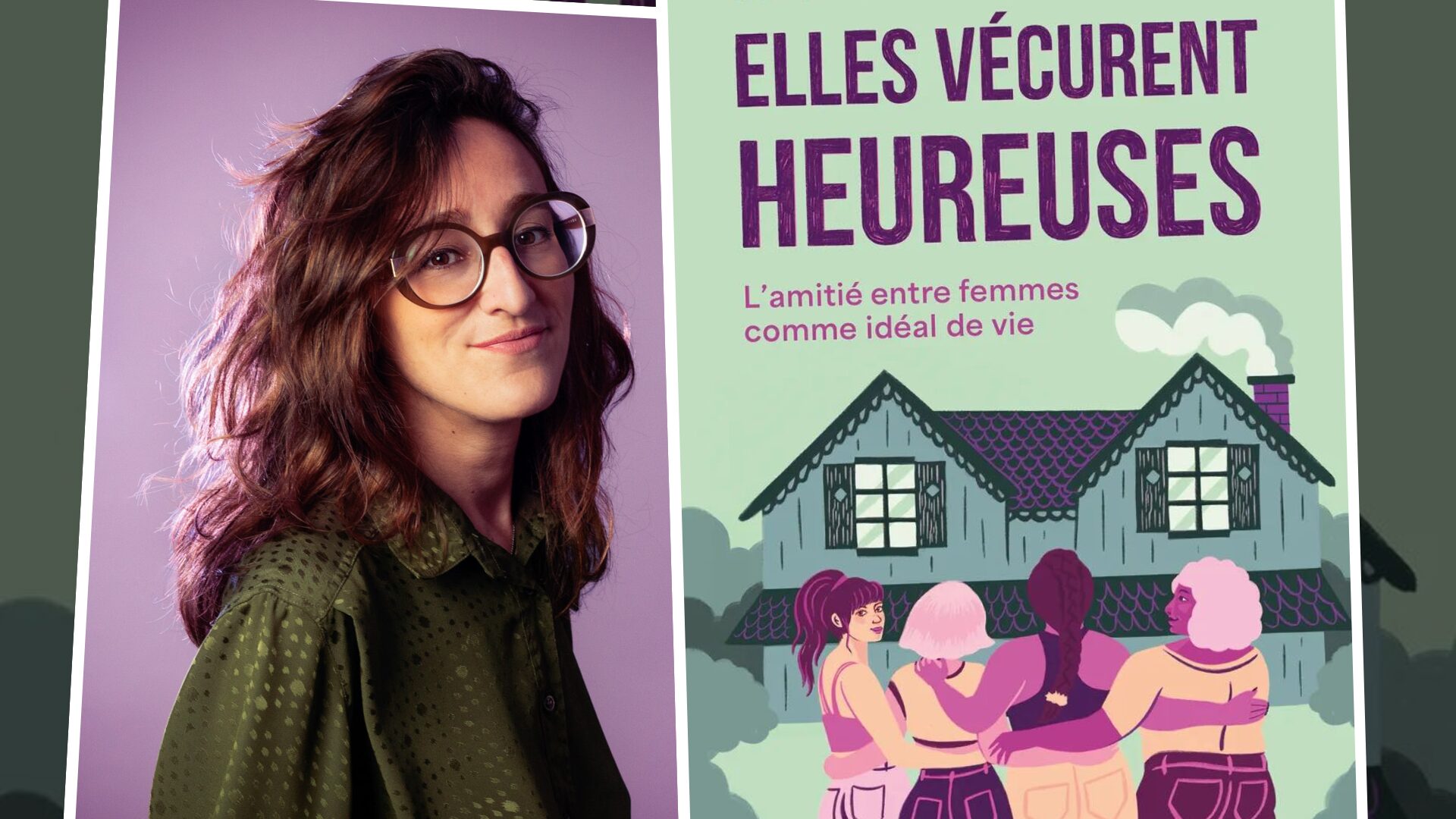In childhood and adolescence it is customary to imagine remaining “friends for life” with one’s circle of close friends. Who has never dreamed of imitating the heroines of his favorite films and series and meeting up every Saturday, like Carrie, Samantha, Charlotte and Miranda from “Sex and the city”, to report on your week? If fiction makes you want, reality is sometimes more complicated. Despite numerous social developments, women’s private lives – once well entrenched in working life – tend to be summed up in two categories: in a relationship or single. When we don’t live in an ideal world created by pop culture, after studies and the first job, the number of friends decreases and with it the time we dedicate to them.
In “They lived happily” (Stock editions), an investigation that also involves her personal experiences, the journalist Johanna Cincinatis focuses mainly on friendly relationships between women in adulthood, and invites us to perceive them as our best resource. If it’s a question of the invisibility of friendship between women until a few centuries ago, their representations on the screen and the weight that the heterosexual and monogamous couple has in friendship, the author also questions the way in which the couple becomes central in a woman’s life to the detriment of her friendly relationships .
The couple, the breakdown of friendships?
The writing of the book started from a personal observation, confides Johanna Cincinatis: “Friendship has always been the foundation of my emotional life. The more the years pass, the more I realize that they fade over the course of life. » The pivot generally arrives around the age of thirty, where there are two paths available to a woman, recalls the author: “to take the path of a couple or that of celibacy”. With the idea that “Friendship can be a third way, a full-fledged emotional and social living environment “, highlights the role of the state in the dominance of heterosexual couples: “As long as the State favors a model, a way of loving, which consists in building one’s life with the person with whom one shares a sexuality, it is difficult to maintain other bonds when one builds oneself in an economic society – leaving the parents’ house, starting a working life, building a family…”
While in recent years the couple is no longer necessarily presented as the norm or as a goal in its own right, it remains predominant with one in two marriages ending in divorce. “Partnership is a factor that inhibits friendships”he writes in his essay, also making use of the research of the sociologist François Héran, who describes youth as “privileged moment for friendships” before work and family take over.
The relational escalator is built by two people, but the marriage phase remains strongly linked to friendship. The author himself explains that this is one of the moments in which friendship still remains central, where “Friendship has to work.”
When friendship is at the service of the couple
“Friendship is at the service of the couple” in the case of two special events, starting from the EVJF (hen party): “The EVJF is the rite that best materializes the hierarchy between conjugal love and friendly relationships. It’s the last moment between friends because we know it’s the beginning of something else, of the great and true love story.” claims the author. Then comes the wedding with the choice of bridesmaids, which once again places friendship at the service of the romantic relationship, he writes in They lived happily : “ It is interesting to show how the friendship relationship, usually reserved for social intimacy, suddenly becomes a pledge, an obstacle.. You should therefore take out your wallet and be ready to spend hundreds of euros on a weekend in a European capital… before you step back and let your friend live her life.
Friendship therefore takes a back seat after the establishment of a stable life as a couple, for practical reasons: economic resources and time are allocated to family rather than friends. “We promise ourselves that the arrival of a child or living with a partner will not change anything, but it is clear that the statistics are against female friendships in adulthood,” analyzes Johanna Cincinatis. Some friendships are rebuilt once the children have gone to university, or even later, in retirement, when possible, and women have access to social spaces.
Faced with this category, what about friends who do not choose a couple and are single? How are they celebrated? Why shouldn’t they deserve the same attention as future brides or mothers? «Due to the hierarchy between marital love and friendship, all those who escape these patterns are deprived of many things: moments of happiness and sharing, economic resources, space… There is a line between what is worthy of being celebrated socially and what is anecdotal”, adds the journalist. However, a single woman knows the joys, sorrows and hardships of everyday life and she also deserves her friends to get together to celebrate some good news, i.e. “a new apartment, a new job, write a book”or help them financially in case of unexpected events.
Giving more space to friendship between women: a utopia that is anything but utopian?
Why should friendship take second place? The author begins her book with a utopian touch, where friendship between women is essential, where friends are officially introduced to parents, where friends and sisters live together and where union between friends has become the norm to pay less taxes and take out bank loans together.
Could friendship between women establish itself as an alternative to the couple and as a true social model? Decidedly optimistic, after having worked on this topic for a year, Johanna Cincinatis thinks that cohabitation (living alone or with friends, but not as a couple) is one of the solutions that allows us to put friendships and relationships on the same level. “Not living with your partner changes your relationship with time and availability. Sexuality, apartment and money distinguish friendship from love. But we must not forget about availability. For example, going to doctor appointments with your friends, informing your friends of important deadlines…”. Everyone is free to find their own solutions!
“They lived happily. Friendship between women as an ideal of life” by Johanna Cincinatis. Reserve editions. Available in bookstores from April 16th.
What if the movie you were going to see tonight was a dump? Each week, Kalindi Ramphul gives you her opinion on which movie to see (or not) on the show The Only Opinion That Matters.
Source: Madmoizelle
Mary Crossley is an author at “The Fashion Vibes”. She is a seasoned journalist who is dedicated to delivering the latest news to her readers. With a keen sense of what’s important, Mary covers a wide range of topics, from politics to lifestyle and everything in between.





.jpg)